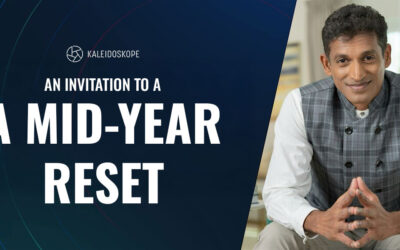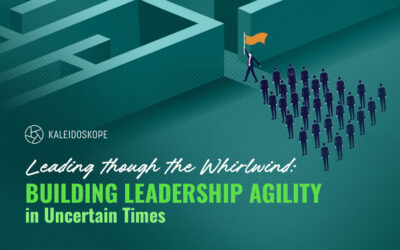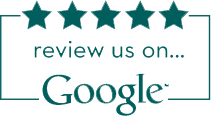Leadership Embodiment – The art of grit and grace to influence

Leadership. This space can give us a bump or a boost. It can put us in a concerned corner or an exuberant expanse – flight, fight, freeze, flurry, fierce or force.
It is the “Power” that comes into play in our very human, and subconscious field. The kind of relationship we have with this power determines what kind of a leader we show up in that space.
Power is energy. We have capacities to shift, express, expand and share. Once we can recognize how to work with it, power becomes a familiarity that we can mindfully and certainly practice. Life with leadership would be an easier place to embrace.
What energy are you, or your leaders emanating? Especially when leaders have to meet business’s speed, exacting demands, increasing complexity and escalating uncertainties.
Shifting the focus
“Change occurs when one becomes what he is, not when he tries to become what he is not,” says Arnold R Beiser.
It is often not what you “try to do” to lead. What matters more is “who you are” as you broadcast your personal leadership energy and presence, gaining the trust, faith and confidence of your team.
You may recall sometimes how you or someone says, “Oh, I like his energy!” or “She has great presence. Very powerful.”
When you can shift the lens of your leadership attention – from seeing it beyond skill sets that need to develop through external (efforts) to seeing it as the internal energy that you already have and already are (effortless). It is a different personal developmental view. You can begin to see power as your inner resource that you can tap into and call it out to dance with the situation.
Energy has current and fluidity.
Broadcasting leadership presence
“Presence influences the room. Which room? The room you are in,” says Jess Tansutat, Leadership Embodiment associate trainer in Asia.
Leaders with presence can hold a space, navigate conversations and manage relationships skillfully. Presence can be expanded, stretched, shrunk or collapsed.
In today’s busy work environments, it doesn’t take much to get pushed over the cliff. We feel faster than we think. We react much faster than we think. We are at the mercy of our emotions. We have to deal with team members, business targets, organisational objectives, personal challenges. Even the smartest most visionary leaders, once triggered, can lose their stands and get reactive. When leaders do that, they feel separated. Their teams feel separated, and are sometimes broken. Power and trust in shared space and common ground are reduced.
It is a mechanism. A leader’s emotions, expression, discernment and language impact, and affect team outcomes. When emotions and defenses are stirred up in situations, they have a negative impact on a leader’s presence, draining his energy and limit his effectiveness.
What would you do to reduce the energy drain on your leadership effectiveness?
Bridging the gap with self-regulation
Leadership requires intrapersonal, interpersonal and group competencies, as well as self-awareness, emotional self-control and relationship management.
As the old saying goes, “Just because it’s common sense, doesn’t mean it’s common practice.” Under pressure, we are even more likely to forget even the most basic things.
Self-regulation helps the body’s nervous chemicals and e-motions (energy in motion) to calm down and bring leaders back to the state of presence so they can make difficult decisions, and manage conversations and conflicts in a more expansive way. Self-regulation is a core practice in the Leadership Embodiment model developed by Wendy Palmer, co-author of Leadership Embodiment: How the way we sit and stand can change the way we think and speak.
Leadership Embodiment approach
The principle of Leadership Embodiment addresses the role of the body in leading effectively. It sees our body as a place to contact our internal resources for self-management so we can process our emotional response and recover from our physiological stress patterns that affects our leadership presence. This is a body-oriented learning process of leadership, beyond the rational mind.
As with many of the other schools of embodiment, it developed out of the combination of the Japanese martial art, Aikido, and mindfulness. The model has been refined for use in business and the performance context of an organization. It works with awareness and focus, and the ability to influence one’s state of being with ease.
The core of the practice is to recognize being in a stressful state and swiftly self-regulate into a flow-state.
As Leadership Embodiment co-author Janet Crawford says, “Most of what we do is neither conscious nor volitional. Until we become aware of what drives us, be it thoughts, emotions, or body dispositions, we are powerless to change. The body takes a shape before the mind consciously identifies a thought or feeling. Our physical being is the most direct point of intervention. How you sit and stand will change the way you think and speak.”
Leadership Embodiment shares an alternative and practical perspective to develop leaders to be in a constant state of power and presence, dancing between grit and grace. Strength and gentleness. Will and kindness.
Grit: Capacity to “take”
This is resilience. Will becomes a source of power, firmness and ability to persevere in the face of challenges. A leader with grit will show capacity to take up a space, taking on responsibility for their words, and actions, taking it on personally and acting on behalf of those he cares about.
Will also has the quality of courage. When it comes to ability to influence our interaction, agreement or conflicts with others, how are we responding to make courageous conversation and courageous acts? Can we develop the capacity to speak what is true within healthy boundaries and inviting collaboration?
Grace: Capacity to “care”
Amy Cuddy in her TedTalk suggested that to influence others, we connect first, then lead. You become what you practise, or do more and more of. What if having an ability to broadcast warmth and care can become part of effective and charismatic leaders? You connect because you care. You become a support and nurturing source for the team. Leading this way means you know how to step back and give space for your team to voice their ideas and optimise their potential, while holding onto the power to stay in contact. The energy of warmth influences trust and trust offers a wonderful ground for future possibilities.
Leadership effectiveness is a choice
The way you choose to influence others has its roots in the intrapersonal layer. By cultivating capacities in taking and caring, your self-awareness, social awareness and relationship management expand. Even if you are not directly in a leadership role or title, developing these capacities are still relevant to your own performance and influence in meeting team and organizational demands.
When you consider HR processes, cultural practices and behaviors, what challenges does your company face? Back-to-back meetings, difficult conversations, disappointment, taking feedback, speaking up, dealing with conflicts, etc.?
You have the power and the choice to help in developing transformative workplace relationships and to move your team into a thriving culture.
Our Leadership Embodiment specialist and expert, Jess Tansutat, will be happy to speak with you.
Jess is a compassionate and curiosity-driven individual with the propensity to initiate positive change in others. She seeks to inspire, and be inspired by, people who inquire to discover their personal boundaries and values, and expand their qualities to respond to transitions and uncertainty skillfully and creatively.
She creates a space for invisible to visible learning, inside-out approach. Together with her clients, she addresses concerns, uncovers what they really care about, challenges assumptions, acknowledges capacities and limitations and finally explores new possibilities so they can respond to change from a greater space.
Her purpose is to help others explore their spectrums of personal and professional excellence through inner perspectives, power of identity, self-awareness and authenticity.
If you’d like to learn more about how you can take the Leadership Embodiment approach to managing your own team or creating a thriving culture for your organization, get in touch with us at Kaleidoskope, today.
Related Blogs
The Mid-Year Reset: Mindful Reflection Over Resolutions
We’ve all witnessed leadership failures in politics, business, and sports. A leader’s mistake and subsequent fallout reveal much about leadership, or the lack thereof. A recent incident involving the US Defence Secretary and other high-ranking officials is a stark warning, underscoring a critical gap within organisations that leadership training can bridge.
Leading through the whirlwind: Building Leadership Agility in Uncertain Times
We’ve all witnessed leadership failures in politics, business, and sports. A leader’s mistake and subsequent fallout reveal much about leadership, or the lack thereof. A recent incident involving the US Defence Secretary and other high-ranking officials is a stark warning, underscoring a critical gap within organisations that leadership training can bridge.
Start Your High-Performance Learning Journey
WITH KALEIDOSKOPE NOW!



